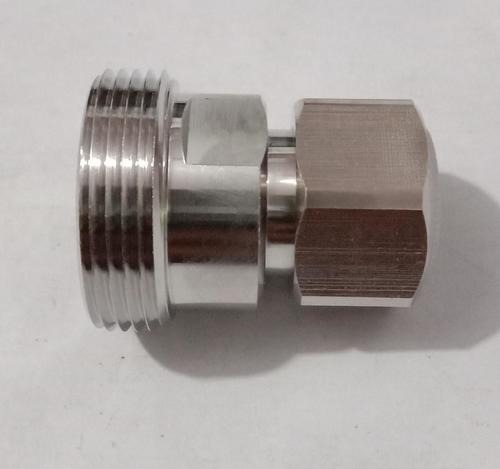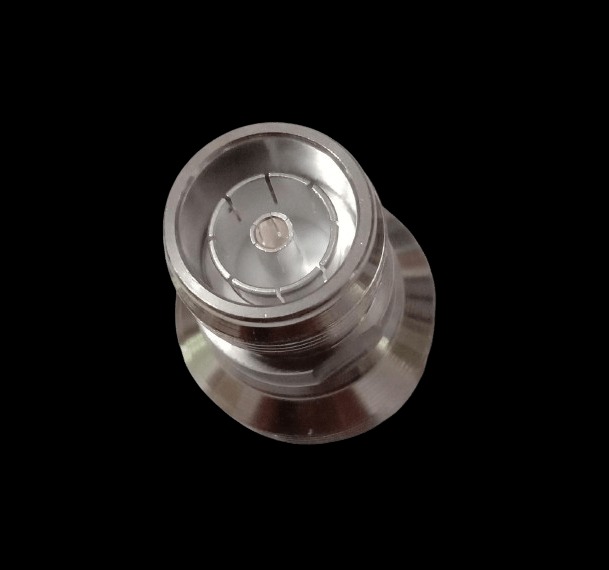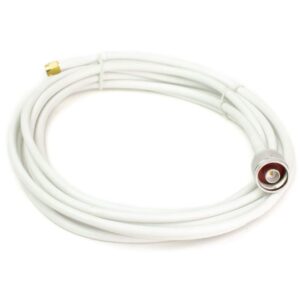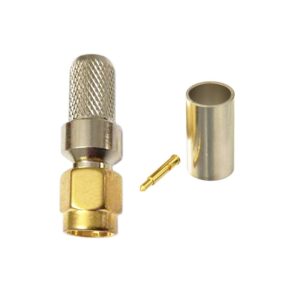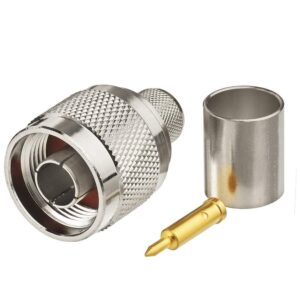Specifications:
- Connector Types:
- Mini DIN Female:
- Connector Type: Mini DIN
- Gender: Female (with a central socket and surrounding shield)
- Size: Smaller than standard DIN connectors, designed for compact applications
- DIN Female:
- Connector Type: DIN (Deutsches Institut für Normung)
- Gender: Female (with a central socket and surrounding shield)
- Size: Standard DIN connector size
- Mini DIN Female:
- Frequency Range:
- Up to 7.5 GHz: The adapter is engineered to operate efficiently at frequencies up to 7.5 gigahertz, making it suitable for high-frequency RF and communication applications.
- Impedance:
- Typically 50 Ohms:
- Mini DIN Connectors: Impedance can vary, so confirm the specific requirements for your application.
- DIN Connectors: Generally 50 ohms for RF applications. Matching impedance is important to avoid signal reflection and loss.
- Typically 50 Ohms:
- Mechanical Construction:
- Material: Constructed from high-quality materials such as brass or stainless steel, often with nickel or gold plating to enhance electrical conductivity and resist corrosion.
- Design: Designed to provide a secure and stable connection between Mini DIN Female and DIN Female connectors, maintaining signal integrity.
- Applications:
- RF Testing: Used in test setups where both Mini DIN and DIN connectors are required.
- Communication Systems: Connecting devices or cables with Mini DIN and DIN connectors in communication systems.
- Specialized Equipment: Suitable for use in equipment that requires a transition between compact Mini DIN and standard DIN connectors.
- High-Frequency Systems: Connecting components in systems operating up to high frequencies.
- Typical Features:
- Low Signal Loss: Designed to minimize signal degradation and ensure efficient signal transfer between connectors.
- Durability: Built to withstand frequent use and provide reliable performance over time.
Usage Tips:
- Confirm Impedance Matching: Verify that the impedance of the adapter matches that of your equipment to prevent signal issues and reflections. Note that Mini DIN connectors can have different impedance values depending on the specific type.
- Check Frequency Range: Ensure that the adapter’s frequency range (up to 7.5 GHz) is appropriate for your application. For higher frequencies, a higher-rated adapter might be necessary.
- Ensure Secure Connections: Make sure that the Mini DIN Female plug and DIN Female plug are properly connected to avoid loose connections, which can lead to signal problems.
- Inspect Regularly: Periodically check the adapter for signs of wear or damage to ensure continued optimal performance.
This Mini DIN Female to DIN Female adapter is a practical solution for connecting or transitioning between Mini DIN and standard DIN connectors, making it suitable for RF testing, communication systems, and other specialized applications where compact and standard connectors are used.

